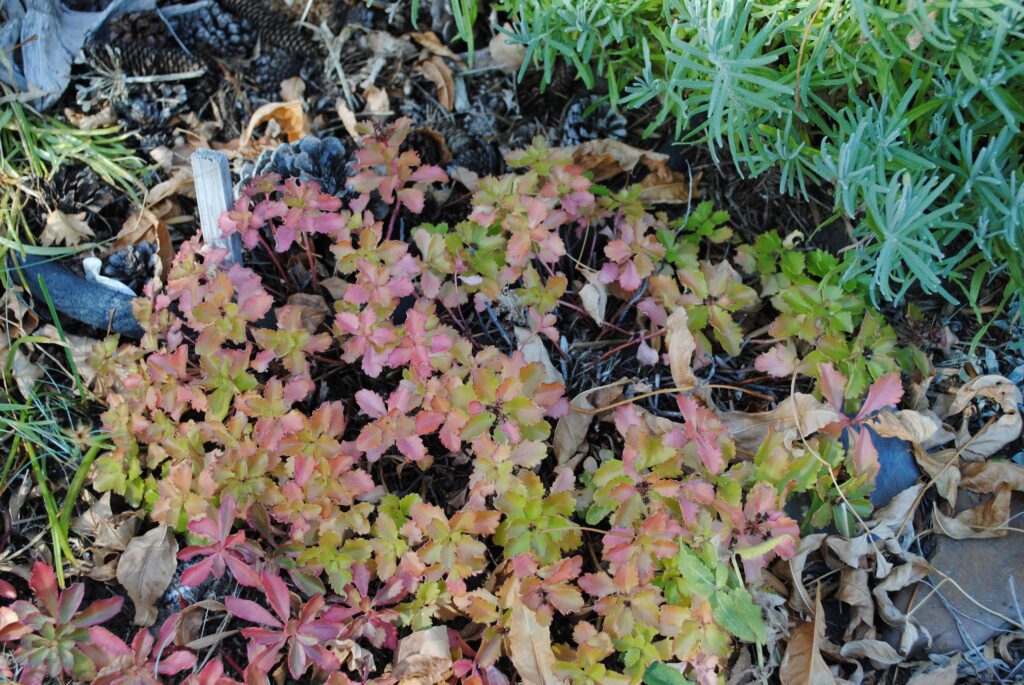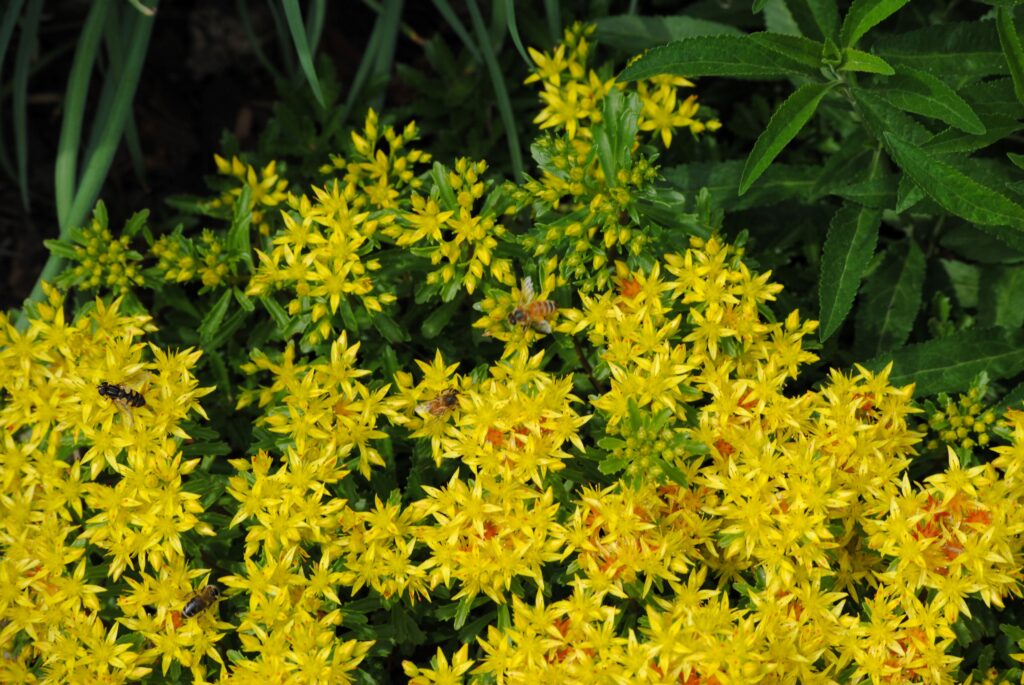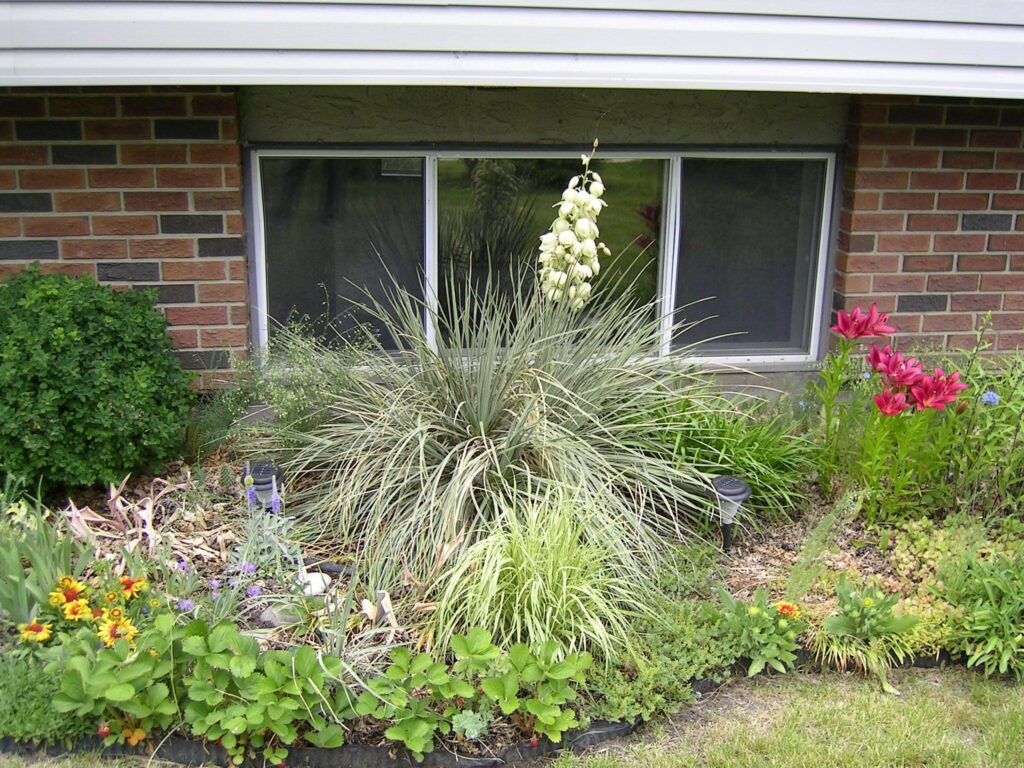
Russian sedum in fall colours
Succulents are drought tolerant, low maintenance and interesting all season long plants. Their leaves and texture contrasts well with other perennials. Spreading like a typical perennial and some, will start a new plant when a leaf or stem touches soil; these are easily removed.
Preferring to grow in lean and or poor soil in full sun or part shade. Dislike water logged soil and will rot in prolonged wet conditions. Mostly safe from deer and rabbit grazing and few pest problems.
Usually grown for their evergreen, interesting and unique foliage, their pretty flowers will be part of your gardens succession of bloom. Succulent bloom times range from early to late summer. Bees, butterflies and moths seek the flower nectar of the pink, red, white or yellow flowers. Cut spent flower stems to tidy the plant up.
Note* Yucca will take a couple of years to bloom.
Succulents grow all around the world
The hardy succulents, for gardens in zones 2, 3 and 4 come from the temperate and polar zones of the world. Succulents grown indoors, in our zones, come from the tropical and sub-tropical zones and are known as tender. These succulents can be moved outside in the summer to a sheltered location out of direct, afternoon sun.

Encrusted Saxifrage in flower
Fact or Folklore
Sempervivum’s were planted on home roofs to ward off lightening. This tradition continues in some parts of the world today.
If the Hen and her chicks suddenly withered, superstition held that someone in the house would die.
Today Hen and chick leaf juice may be rubbed on minor stings and burns for relief.
In ancient time, the juice of Sedum leaves was used as a salve for some skin diseases and to dispel intestinal worms. Pliny, a roman naturalist, said the juice was good as an external treatment for wounds and fistulas.
In more recent times Sedum’s astringent leaves have been used to help heal wounds.
For the love of Latin names
Saxifrage – saxum rock or stone
Sedum – sedo meaningto sit, in reference to their growth on rocks and walls
Sempervivum – meaning evergreen

Russian sedum and the bees
Saxifraga, Sedum, Sempervivum and Yucca
Each of these plant families has a hardy perennial for a Prairie garden. Common names: Stonecrop for Sedum. Rockfoil for Saxifraga Hen and chicks for Sempervivum and Yucca is both the common and botanical name
Saxifraga
Encrusted Saxifrage – Saxifrage paniculata has flat, leathery, blue-green leaves with a white raised edging around each leaf. Rosettes grow in a mound and have white flowers with purple dots. Note* Mossy Saxifraga – Saxifraga arendsii is more fern-like and prefers shade and moist soil.
Sedum
Foliage may be blue, blue-gray, blue-green, gray-green, green, maroon and purplish; some are variegated. Height ranges from ground covers like acre sedum to 14’’ tall Autumn Joy.
S. acre Golden Carpet, S. divergens Old Man’s Bones, S. rupestre/ S. reflexum Angelina and Blue spruce, S. spectabile Autumn joy, S. spurium Dragons Blood, S. kamtschaticum Russian.

Adam’s needle Yucca in flower
Sempervivum
All grow as rosettes and may form a tidy mound or an informal group. Foliage may be bronze, green, purple or reddish. Others may have red markings or webbing similar to a spider’s work or fuzz/short hairs on their leaves.
S. tectorum Purple, S. arachnoideum Cobweb
Yucca
Yucca glauca is the native species growing wild in Saskatchewan and Alberta. All Yucca grow as a rosette with stiff, upright leaves. Yucca glauca and Y. filamentosa rarely have stems/trunks like their relatives in the tropic and sub tropic zones of the world.
Y. filamentosa has three variegated species available with broad, sword-like leaves: Bright Edge – dark green with a bright gold edge, Colour Guard- yellow and green and Golden Sword – green and creamy yellow. Adam’s Needle is blue-green with thin leaves and very sharp tips. A mature plant spreads by producing young rosettes from the crown.
Caution: Wear eye protection when working with or around Yucca.
∞⸙∞☼∞⸙∞
New succulent cultivars are developed each year. Visit a garden center, it’s the best way to check plants out. Check hardiness zone of new and colourful introductions, they may require winter protection.
Note *Echeveria are beautiful succulents, and in the same Crassulaceae Family as Sedum, BUT are not hardy to our climate as they originate from the tropics. Remove them from your annual planter and pot up to spend the winter as a houseplant. Check for pests and clean as needed. Place in quarantine for a week or two, this reduces infecting other houseplants with a pest. Likewise for the hardy sedum in annual planters, transplant to the garden in the fall, before freeze up.
References
Herbal remedies in pots by Effie Romain and Sue Hawkey
Magic and medicine of plants by Reader’s Digest
The handbook of cacti and succulents by Clive Innes
Gardener’s Latin by Bill Neal